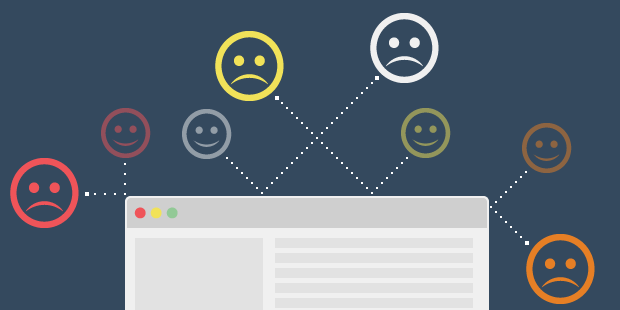Everything You Should Know About Bounce Rate
Bounce Rate is one of the most misunderstood metrics in web analytics. Let’s demystify it for you.
A bounce is a single-page session on your website. OK, here is the very technical explanation: In web analytics, a bounce is calculated specifically as a session that triggers only a single request to the Analytics server, such as when a user opens a single page on your site and then exits without triggering any other requests to the Analytics server during that session.
You find your bounce rate using Google Analytics.
Bounce Rate is the percentage of all sessions on your site in which users viewed only a single page and triggered only a single request to the Analytics server.
These single-page sessions have a session duration of 0 seconds since there are no subsequent hits after the first one.
High bounce rates typically indicate that the website isn’t doing a good job of attracting the continued interest of visitors.
Three Reasons a high Bounce Rate is a GOOD thing?
Is a high bounce rate always a bad thing? It depends.
For example, if the success of your site depends on users viewing more than one page, then, yes, a high bounce rate is bad. Consider this: If your home page is the gateway to the rest of your site (e.g., blog posts, eCommerce pages, your checkout process) and a high percentage of users are viewing only your home page, then you don’t want a high bounce rate.
- On the other hand, if you have a single-page site like a blog, or offer other types of content where single-page sessions are expected, then a high bounce rate is perfectly normal. And don’t always view Bounce Rate as a bad thing. What if your user came to your site to specifically find a phone number or address or other contact information? Sometimes the user found exactly what they wanted and left.
- If you have several “landing pages” where you have a web form to fill out you will end up with a high bounce rate. But that is not a bad thing.
- Let’s say you have an eCommerce site where you are selling products. You are likely to have a lot of links to affiliated products or services. In this case, you WANT a high bounce rate.
How to lower your bounce rate
If your overall bounce rate is high, then you can dig deeper to see whether it’s high on the home page only or on other pages as well.
For example, if just a few pages are the problem, examine whether the content correlates well with the marketing you use to drive users to those pages. Is your navigation from one page to another clear to your users on the next steps you want them to take.
If the problem is more widespread, have your web developer take a look at your tracking-code to be sure all the necessary pages are tagged and that they’re tagged correctly.
If you still have problems you may want to reevaluate overall design of your website. Examine the language, graphics, color, calls to action, and visibility of important page elements.
8 Steps To Take to Lower Bounce Rates
- The single best way to lower your bounce rate is to amp up the engagement on the content you post.
- Make sure your site is optimized for use on mobile phones and pads. 80% of all Internet users are on mobile. Nearly 60% of all searches are done on mobile phones.
- Make sure you consistently use key words for your website. Have a content and keyword strategy
- Try to provide relevant content and showcase it. Also always be looking freshen up the content you are serving to visitors.
- Pay attention to how you create navigation. Make it clear and easy to understand.
- Make sure there is an easy to find search function on your home page or landing page.
- Get rid of pop-up ads.
- Make sure any external links are set to open in a new tab or window. Sharing external content is great, but do it in moderation.
Bounce Rate is a metric you can use to analyze your marketing efforts. You can use it to measure if you’re living up to your visitors’ expectations. And you can use the bounce rate to decide which pages need more attention. At Luce’ Media we can help you implement best practices to lower Bounce Rates and help you drive more users to your website. Meeting your visitors’ expectations and making your pages more inviting for visitors all leads to creating an awesome website. And we all know that awesome websites rank better!
You might also be interested in improving the SEO for your website. Click here for more.






